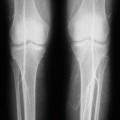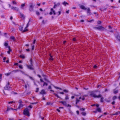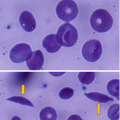(1)
Department of Surgery, Dar A lAlafia Medical Company, Qatif, Saudi Arabia
11.1 Introduction
Sickle cell anemia is a chronic hemolytic anemia which can affect any part of the body including the musculoskeletal system.
One of the skeletal manifestations of SCA is the hand-foot syndrome. This is also called dactylitis (Figs. 11.1 and 11.2).
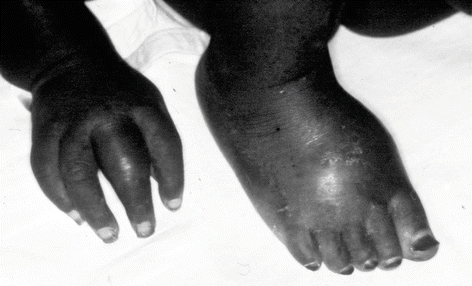
Fig. 11.1
A clinical photograph showing the hand-foot syndrome in a child with sickle cell anemia
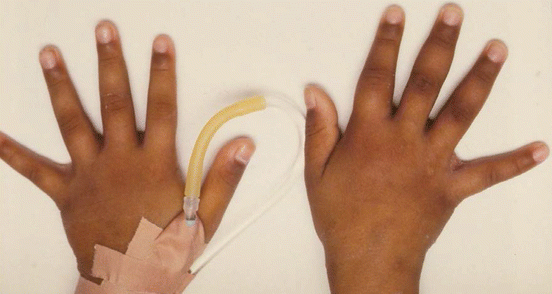
Fig. 11.2
A clinical photograph showing a mild attack of dactylitis involving the right hand. Note the slight swelling of the dorsum of the hand and phalanges when compared to the left hand
Dactylitis commonly occurs in patients with:
Homozygous hemoglobin S disease (sickle cell anemia)
Sickle cell-hemoglobin C disease
Sickle cell-beta-thalassemia
Extremely rare in those with sickle cell trait
In 1941 Danford, Marr and Elsey reported the first case of dactylitis in a child with sickle cell anemia.
Tori in 1954 described the radiological changes in dactylitis including destruction and a periosteal reaction in the metacarpals of both hands.
Smith in 1953 used the term “hand-foot syndrome” to describe the acute swelling in the hands and feet of children with sickle cell anemia.
The hand-foot syndrome is a relatively common complication of sickle cell anemia and has been reported to occur in 10–20 % of patients with sickle cell anemia
The hand-foot syndrome commonly affects infants and children between 6 months and 3 years of age.
It is extremely rare after the age of 5 years, and the reason for this is that hematopoiesis in the small bones of the hand and feet ceases at this age.
Stay updated, free articles. Join our Telegram channel

Full access? Get Clinical Tree




